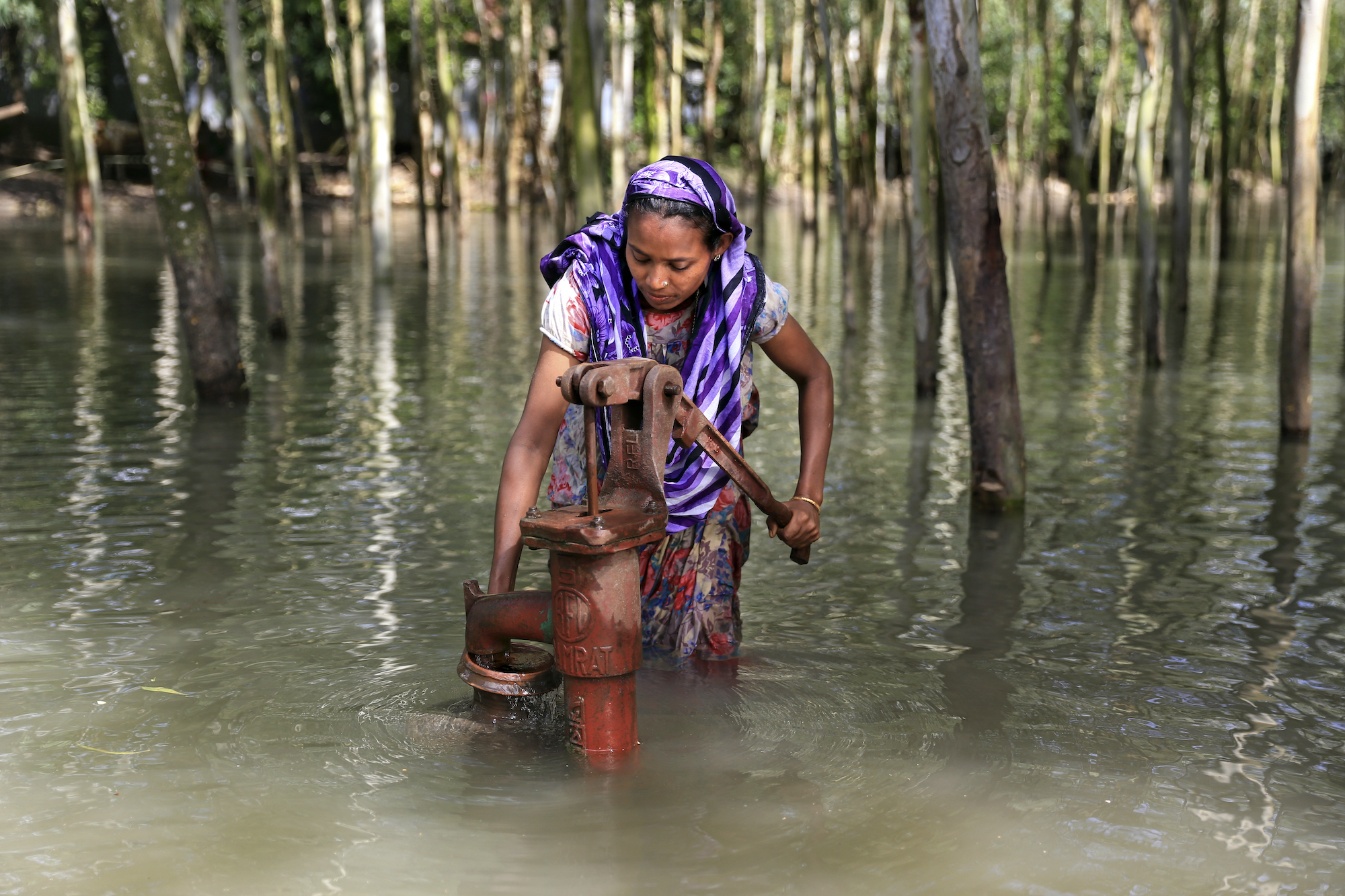How climate change affects waterborne diseases
Waterborne diseases like cholera and typhoid are still a leading cause of human morbidity and mortality worldwide. As climate change increasingly impacts global temperatures and weather events, the risk of these infectious diseases will only worsen. But there are actions we can take to reduce these risks.

Salma collects water from a tubewale to reduce outbreaks of waterborne diseases like cholera, typhoid and diarrhoea in Jamalpur, Bangladesh.

Waterborne diseases are caused by drinking or coming into contact with contaminated water.
This contamination could be caused by pollutants, like agricultural chemicals, or faeces from an infected person or animal.
Waterborne diseases, such as cholera, typhoid and E. coli infections, are a major public health issue causing 3.4 million deaths annually. And climate change is increasing the risk.
The climate variables that most influence waterborne illness include:
- extreme weather events (like storms, droughts, precipitation, floods and wildfires)
- increase in air temperature
- increase in water temperature
Cholera outbreaks are closely related to environmental conditions. Cholera is an acute diarrhoeal infection caused by ingestion of food or water contaminated with the bacterium Vibrio cholerae.
Temperature and precipitation can be influential in cholera outbreaks. High temperature can accelerate the growth and proliferation of pathogens in their habitats (like raw food or water). For example, a 1°C rise in temperature was associated with a two-fold increase in cholera cases in Zanzibar.
Rainfall also has a direct influence on the transmission of cholera. High rainfall can increase the risk of wastewater contaminating either raw or treated water (person-to-environment transmission). While low rainfall can increase the concentration of pathogens in water (environment-to-person transmission). A study in Bangladesh found that the number of cholera cases increased by 14% when rainfall increased by 10mm above the rainfall threshold.
Cholera isn’t the only waterborne disease impacted by high temperature, heavy rain and drought. For example, studies have found that increases in ambient temperature are linked to more cases of diarrheagenic E. coli. And in Fiji, cases of typhoid are more likely to occur in areas that have experienced flooding of a stream or river.
Extreme weather events can also result in the ideal conditions for these infectious diseases to spread. Cyclones Idai and Kenneth, which hit Mozambique in March and April 2019, affected 254,750 people. Households impacted by flooding lost access to safe sanitation, with latrines overflowing and homes destroyed. Thousands of people were displaced, and large parts of the country lost access to water. This combination of events sparked cholera outbreaks resulting in 6,600 cases and over 200 deaths.
Climate change is increasing the risk of waterborne diseases. The sooner we act to mitigate the impacts of climate change – by transitioning from using fossil fuels to clean, renewable energy – the better off we’ll be in the future.
But mitigation alone will not be enough. There are other actions we must take to adapt to the risks:
- provide universal access to care and disease management
- improve disease surveillance
- develop and invest in early warning systems to monitor changes in climatic conditions
- upgrade water catchment, storage, treatment and distribution systems
- protect critical infrastructure from floods, storms and sea level rise
- limit water overuse
- use household water purification systems
We are funding teams to catalyse the development of climate and health research. Explore our current funding calls:
Heat adaptation: evaluating interventions to help manage the health effects of heat
Waterborne diseases like cholera and typhoid are still a leading cause of human morbidity and mortality worldwide. As climate change increasingly impacts global temperatures and weather events, the risk of these infectious diseases will only worsen. But there are actions we can take to reduce these risks.